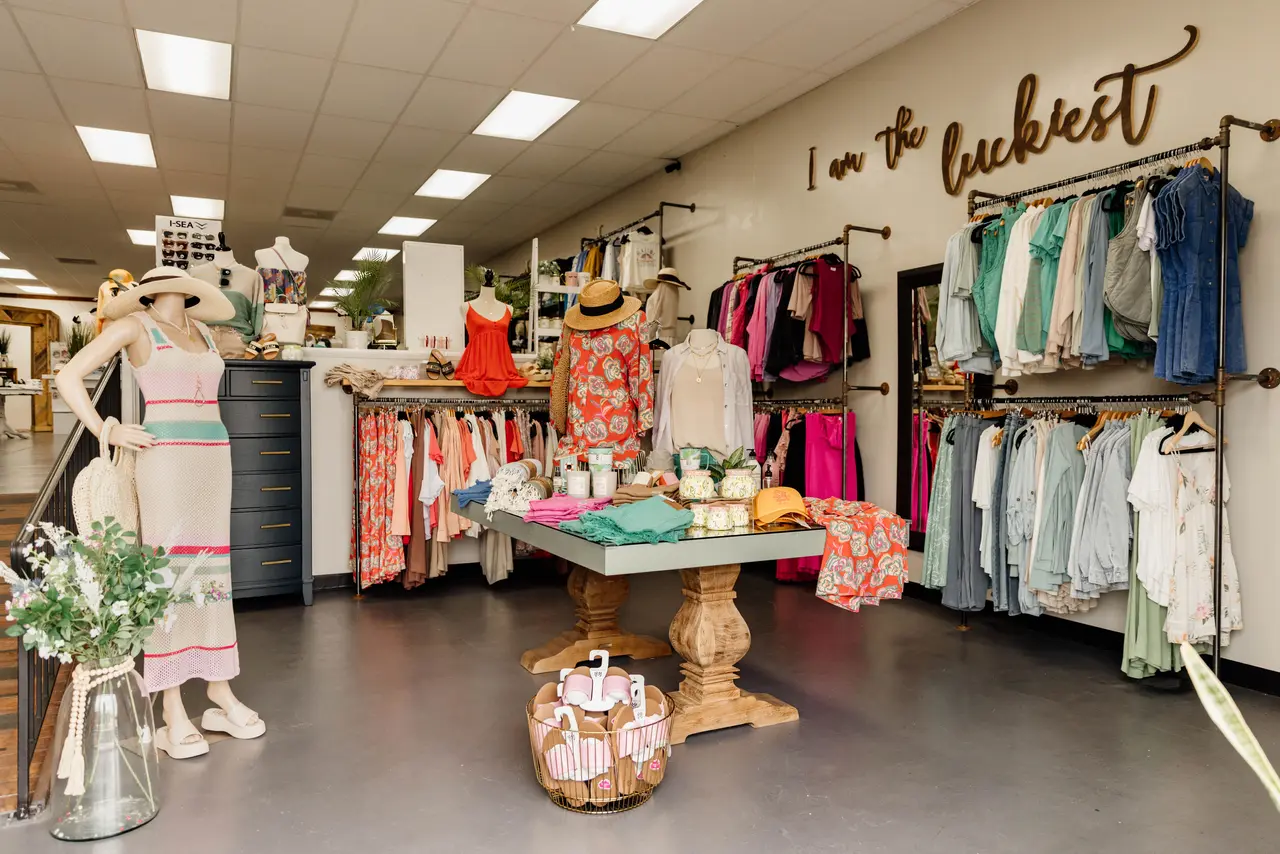The Increase of Online Buying: Finding Boutique Fashion at Your Fingertips
The Increase of Online Buying: Finding Boutique Fashion at Your Fingertips
Blog Article
Discovering the Evolution and Effect of Apparel on Modern Fashion Trends
The development of clothes has considerably influenced modern fashion trends, combining historic precedents with advanced developments. Renowned figures like Coco Chanel and Yves Saint Laurent revolutionized the style sector by presenting ideas that prioritize convenience and availability, which continue to resonate today.
Historic Style Influencers
In the tapestry of fashion history, certain numbers have left an indelible mark, forming the patterns and styles that define whole ages. Coco Chanel, a cutting edge developer, redefined women's style by presenting comfortable, classy apparel that left from restrictive bodices. Her famous Chanel suit and little black outfit have become classic staples in wardrobes worldwide. Christian Dior's post-war "New Look" in 1947, with its celebration of womanhood through complete skirts and cinched waists, noted a return to opulence and has actually proceeded to influence developers.
Elsa Schiaparelli is an additional pivotal number, renowned for her avant-garde styles that included surrealist art, collaborating with Salvador Dalí to produce wayward pieces that challenged standard appearances. Her ingenious use color and vibrant patterns reverberates in contemporary fashion. Yves Saint Laurent, at the same time, democratized haute couture with prêt-à-porter collections, bringing path styles to the masses and establishing a criterion for modern ready-to-wear lines.
These visionaries, to name a few, not just revolutionized style in their times however likewise established sustaining trends that resonate in today's apparel industry, giving a foundation upon which contemporary developers remain to construct and innovate. Their legacies highlight the value of creative thinking and daring in fashion's ever-evolving narrative.
Technological Developments in Style
In the middle of the vibrant landscape of the style industry, technical innovations stand at the center of innovation, reshaping how designers develop and customers involve with style. The integration of 3D printing has actually changed layout procedures, making it possible for developers to explore complicated structures and sustainable materials that were previously inconceivable. This modern technology promotes quick prototyping, lowering waste and quickening manufacturing times.

Smart fabrics, embedding modern technology into materials, are additionally changing the industry. Innovations like temperature-regulating and self-cleaning fabrics offer improved performance and comfort. Wearable technology, integrating features like physical fitness monitoring and communication, includes a new dimension to style, combining aesthetic appeals with usefulness.
Cultural Shifts and Style
As technical improvements remain to improve the fashion business, cultural changes are equally prominent, redefining style and consumer preferences. Over the last few years, the increase of social networks systems has sped up the dissemination of worldwide fashion patterns, allowing diverse cultural impacts to merge and exist side-by-side. This electronic interconnectivity has actually assisted in the fast exchange of ideas, resulting in a more eclectic and comprehensive analysis of design that shows the diverse nature of modern society.
Social recognition and recognition have prompted developers to attract ideas from a wider spectrum of historic and ethnic contexts, incorporating conventional motifs with modern aesthetics. This blend has resulted in fashion that reverberates with a broader audience, advertising a sense of identity and belonging throughout different demographics. In addition, the boosting need for customization has driven brand names to provide customizable alternatives, allowing customers to reveal individuality while mirroring their cultural heritage.
Furthermore, changing societal worths have impacted fashion, with inclusivity and variety ending up being main styles. The industry has begun to welcome models and influencers of numerous physique, ethnic cultures, and gender identifications, challenging traditional beauty requirements. This change emphasizes the power of social changes in forming the future of style, as style comes to be a more genuine expression of individual and collective identification.
Sustainability and Modern Layout
While the apparel industry remains to progress, the vital for sustainability has actually become progressively immediate, affecting contemporary layout techniques. This shift aims to resolve environmental issues and honest factors to consider, leading to a reevaluation of traditional manufacturing methods. Developers are currently integrating sustainable materials, such as natural cotton, recycled polyester, and eco-friendly fabrics, into their collections, decreasing the environmental impact of style. The surge of slow-moving style, which emphasizes high quality over amount, urges customers to spend in timeless pieces rather than transient trends.
Furthermore, modern-day style is characterized by its advancement in reducing waste and advertising circularity. This technique not only minimizes environmental impact however also boosts the social obligation of style residences.

Future Trends in Style

Sustainability will remain to be a driving force in forming future fashion fads. The market is increasingly taking on environment-friendly materials and honest production techniques, replying to an expanding customer demand for accountable techniques. Advancements such as bio-fabricated materials and closed-loop recycling systems are established to redefine how garments is produced and taken in, reducing ecological influence while preserving design and quality.
Social changes, including the surge of inclusivity and diversity, will certainly also play an essential duty. As society ends up being extra familiar with social concerns, style is expected to end up being a system for expression and change. Designers will likely concentrate on creating collections that show a more comprehensive series of identities and experiences, championing representation and access.
Conclusion
The development of apparel significantly affects contemporary style fads, where historic impacts combine with contemporary styles. Trick numbers like Coco Chanel and Yves Saint Laurent have redefined style, while technical technologies such as 3D printing and smart textiles expand innovative opportunities. Social changes in the direction of inclusivity and sustainability urge brand names to embrace and embrace ethical practices diversity. This ongoing evolution highlights fashion's role as a mirror to societal values and technological development, suggesting a future rich with innovation and inclusivity.
The advancement of apparel has actually considerably influenced modern style patterns, merging historic criteria with cutting-edge technologies.Among the dynamic landscape of the fashion sector, technical developments stand at the center of technology, reshaping how developers produce and consumers involve with fashion.While the style sector proceeds to develop, the vital for sustainability has read more come to be progressively immediate, influencing modern style practices. As sustainability comes to be embedded in modern-day style, it leads the method for a more aware and responsible style industry.
The advancement of clothes dramatically affects modern-day fashion patterns, where historical influences combine with contemporary layouts.
Report this page